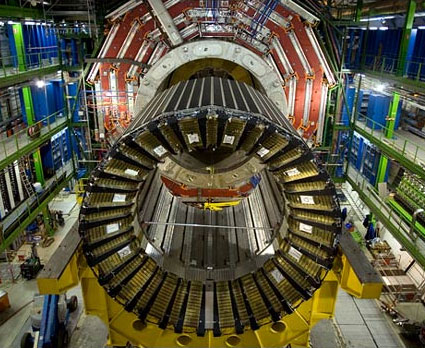First proton collision in large particle accelerator
The European Nuclear Research Center (CERN) on November 23 reported the first collisions of proton beams in a large particle accelerator (LHC).

CERN General Manager Rollf Hoier said it was a big step in a short time.
A CERN scientist said that this could be the beginning of a marvelous era of physics and invention after 20 years of international community efforts to create unprecedented devices of complexity. and features.
The large particle accelerator was restarted on November 20 after more than 1 year of fixing a problem that caused the machine to be seriously damaged.
Currently proton beams are moving in the LHC - a 27km long tunnel, located at a depth of 100m below the ground at the border between France and Switzerland, at a speed of light (300,000 km / s).
The movement of proton beams is maintained by thousands of superconducting magnet rods.
It is expected that by January or February 2010, the energy of proton beams will reach 7 teraelectrovolt (Tev).
Then scientists will begin experiments, which can reproduce the conditions that existed about 13 billion years ago, after the time of Big Bang about 1-2 parts per thousand. billions of seconds, the explosion is said to have created the Universe.
- Atom smasher creates new material
- China wants to build a particle accelerator twice as large as the LHC
- The biggest machine in the world prepares an explosion of
- The LHC accelerator will operate at the highest energy before
- First experiment with LHC large particle accelerator
- First collision between lead ion particles in LHC
- Uncover the secret of the universe when LHC 're-exported'
- China built the world's largest particle accelerator
- The person with half face is not aging because of the particle accelerator input
- Can this Chinese super machine
- Visit the biggest machine in human history
- Large particle accelerator stops working due to mating bite
 Vietnam 5th Asian champion on fuel-efficient vehicles
Vietnam 5th Asian champion on fuel-efficient vehicles We can read all NASA studies completely free of charge
We can read all NASA studies completely free of charge Singer and songwriter Bob Dylan won the 2016 Nobel Prize for Literature
Singer and songwriter Bob Dylan won the 2016 Nobel Prize for Literature Scientific revolution in Asia
Scientific revolution in Asia